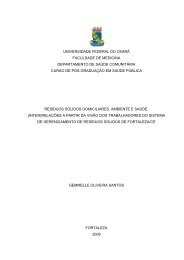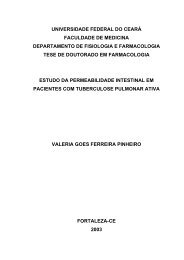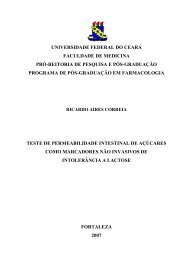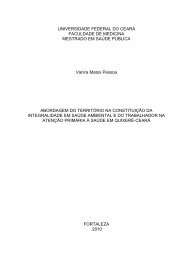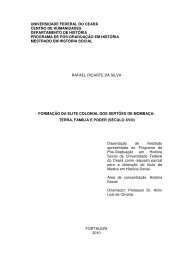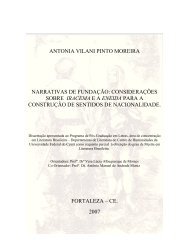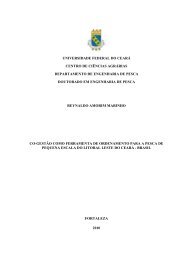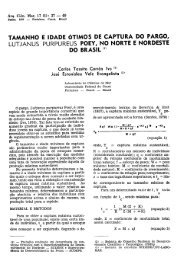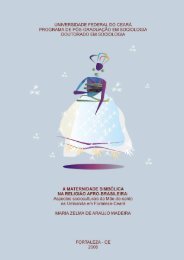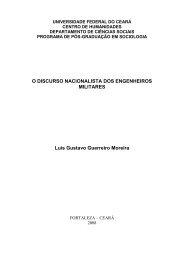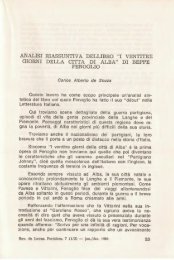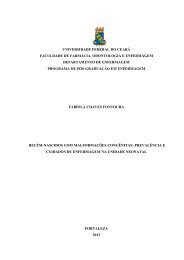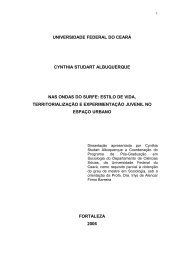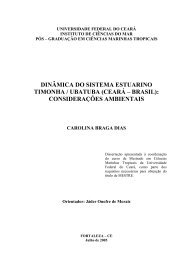Tungíase: doença negligenciada causando patologia grave
Tungíase: doença negligenciada causando patologia grave
Tungíase: doença negligenciada causando patologia grave
Create successful ePaper yourself
Turn your PDF publications into a flip-book with our unique Google optimized e-Paper software.
Tropical Medicine and International Health volume 15 no 7 pp 856–864 july 2010<br />
L. Ariza et al. Rapid community assessment of tungiasis<br />
prevalences from 21.1% (214 ⁄ 1015; survey 7 – Brazilian<br />
rural community, rainy season) to 54.4% (462 ⁄ 849;<br />
survey 6 – Brazilian urban slum, dry season). In general,<br />
highest prevalences of tungiasis and of severe disease<br />
were found in the dry season (surveys 1, 2, 6, 9, 10).<br />
The highest prevalence (10.2%; 19 ⁄ 186) of severe<br />
disease (>20 lesions) was found in one of the fishing<br />
communities in Nigeria (survey 9). The maximal<br />
number of lesions per individual ranged between 40 and<br />
199 (Table 2).<br />
In most surveys, men were more frequently infested<br />
(prevalence 22.9%; 105 ⁄ 459–63.5%; 235 ⁄ 370) than<br />
women (18.5%; 119 ⁄ 644–51.8%; 143 ⁄ 276) with a<br />
male ⁄ female prevalence ratio between 1.7 and 1.0 (Table<br />
2). However, the difference was only statistically significant<br />
in the urban slum in Brazil (P < 0.0001).<br />
Rapid assessment of prevalence in the communities<br />
The six topographic areas considered as putative sites for<br />
rapid assessment and their characteristics are summarized<br />
in Table 3. Considering a high R 2 value, time and<br />
simplicity of the procedure, we identified the periungual<br />
areas of the toes as the most promising site. In fact, the<br />
estimated prevalence based on this localization very<br />
reliably predicted the overall true prevalence of tungiasis<br />
(R 2 = 96%; P < 0.0001; Figure 3a).<br />
After estimating the prevalence of tungiasis (expressed<br />
as [estimated prevalence] = 1.12 · [prevalence on periungual<br />
sites] + 5.0), absolute errors ranged between )4%<br />
(survey 1) and +3.6% (survey 4; Table 4). The mean<br />
absolute error was 1.9%.<br />
Presence of embedded sand fleas at the periungual areas of<br />
the feet also reliably estimated prevalence of severe disease<br />
using the equation (R 2 = 76%; P = 0.001; Figure 3b).<br />
Absolute errors of estimated prevalence of severe disease,<br />
when compared to true prevalence of severe disease, ranged<br />
between )3.1% (survey 9; Nigeria) and +2.5% (survey 6,<br />
Brazil; Table 4). The mean absolute error was 0.9.<br />
Discussion<br />
Similar to other parasitic skin diseases, tungiasis is underestimated<br />
and can be considered a Neglected Tropical<br />
Table 3 Comparison of possible topographic areas used for rapid estimation of prevalence of tungiasis<br />
Topographical area<br />
Time needed<br />
to examine one person Comments<br />
Periungual areas of feet + Individual can be examined with minor disturbance;<br />
sandals or thongs can be kept.<br />
Diagnosis easily made by lay personnel<br />
Right foot +++ Individual has to take off thongs and needs to stand<br />
up to show heel and plantar side of foot. Areas<br />
between and beneath toes are difficult to access, and<br />
toes need to be spread.<br />
Requires more skills of investigators, increased risk<br />
of investigator bias.<br />
Periungual areas of right foot + Individuals can be examined with minor disturbance<br />
without taking off thongs ⁄ sandals.<br />
Periungual area of any 1st toe + Individual can be examined with minor disturbance<br />
without taking off thongs ⁄ sandals.<br />
Increased risk for errors at data collection.<br />
Periungual area of right 1st toe + Individual can be examined with minor disturbance<br />
without taking off thongs ⁄ sandals.<br />
Right 1st toe ++ Individual has to take off thong and needs to stand<br />
up to show plantar side of toe. Area between toes I<br />
and II is difficult to access, and toes need to be<br />
spread. Increased disturbance.<br />
Requires more skills of investigators, increased risk<br />
of investigator bias.<br />
Strength of<br />
association (R 2 )<br />
Relative values (+, ++, +++) are given, as the time to examine one person varies considerably within and between communities (according<br />
to presence and number of lesions, age of individual, socio-cultural setting and experience of investigator).<br />
860 ª 2010 Blackwell Publishing Ltd<br />
96%<br />
95%<br />
93%<br />
93%<br />
88%<br />
70%



